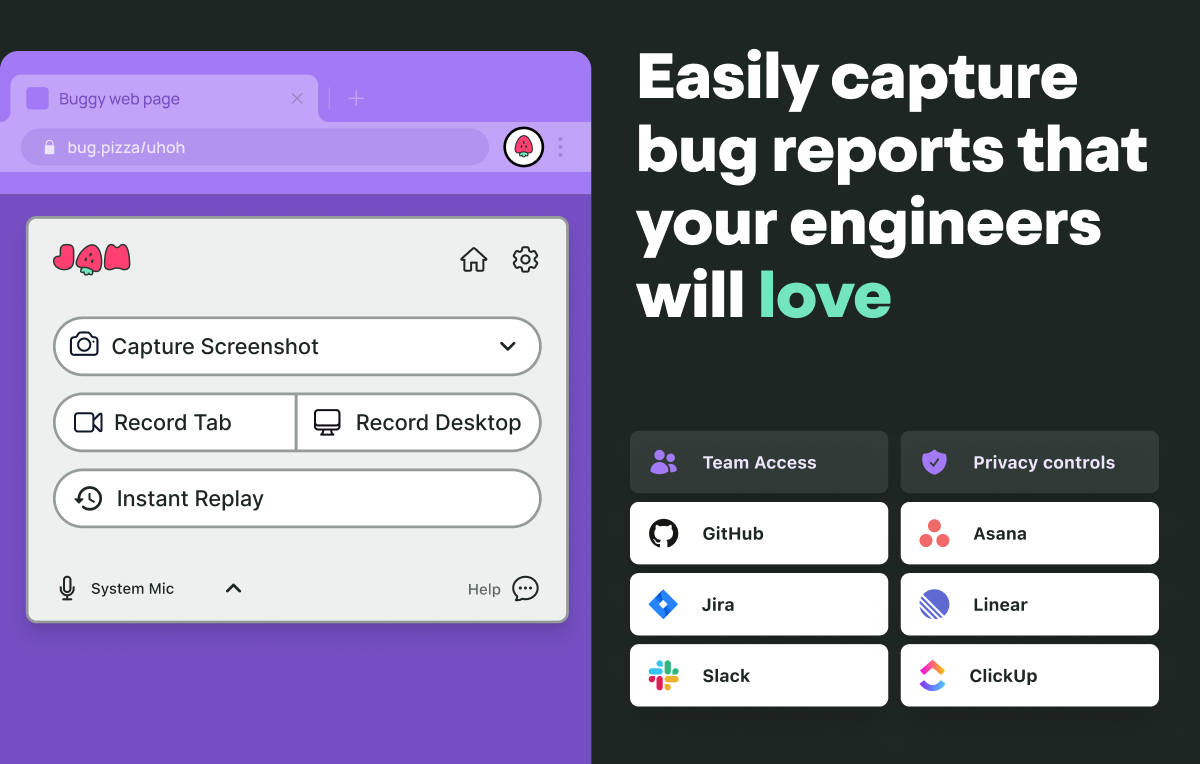The Essential Bug Reporting Tool for Quality Assurance in 2023
In a startup environment where the agility and efficiency of QA teams are paramount, novel bug reporting tools like Jam are reinventing the game by enhancing communication, streamlining bug tracking, and fostering collaboration. In today's tech-focused column, we dig deep into the features that set these bug reporting platforms apart, the ones that every modern QA specialist would crave in their bug-hunting arsenal.

Efficient Communication
Now, let's start with communication, often considered the backbone of efficient software development. For a QA operative, the reporting software's capacity to create a synergistic ecosystem for developers, testers, and stakeholders is of utmost importance. This encourages seamless reporting, tracking, and resolution of software hitches in a cooperative milieu.
Centralized Bug Tracking
When it comes to bug tracking, it is the centralized architecture of these tools that truly shines. A QA pro working in a startup would need a hub, like Jam, where they can effectively capture, document, and record bugs. These platforms serve as a comprehensive reference point where testers can meticulously draft bug reports, covering critical information from reproduction steps and screenshots to system specifications.
Collaboration and Bug Ownership
But what about team collaboration and bug ownership? Modern bug reporting tools don't disappoint here either. They facilitate developer-tester cooperation, allowing functionalities like comment additions, bug ownership assignments, and real-time updates for team members. A startup QA specialist would find this immensely beneficial, as it ensures transparent communication and expedites bug resolution.
Workflow Management
Speaking of expedited resolution, one possible feature in platforms like Jam is the capacity to customize workflows. This gives QA teams the freedom to sketch their bug resolution blueprint, with stages like triage, validation, assignment, and resolution in place. This way, they can bring order to their bug resolution process and bring critical issues to the front of the queue.
Metrics and Analytics
Moreover, with the introduction of sophisticated reporting and analytics features, these bug reporting platforms offer QA specialists the power to spot trends, gauge progress, and make decisions rooted in data, all aimed at bolstering software quality.
Intuitive Interface
What sets tools like Jam a cut above the rest of the bug reporting tools, is possibly their user-centric approach to interface design. An intuitive, friendly interface empowers QA individuals to craft and manage bug reports effortlessly, contributing to efficient bug management.
Automated Bug Reporting
Lastly, if we're talking efficiency, it’s worth mentioning the prospective automated bug reporting. As highlighted in a Jam blog post, this feature has the potential to revolutionize the bug reporting process by automating the otherwise manual and time-consuming task.
Conclusion
In a nutshell, the emergence of tools like Jam brings a fresh wave of innovation to bug reporting, potentially making the lives of QA specialists at startups significantly more manageable and their work considerably more efficient.
